Apricoat EcoDown Jacket Review
A few years back, I wrote an article about the kickstarter campaign by a company called Apricoat, making a waterproof jacket that they described as the ‘ultimate adventure jacket’. Although not a review, my article (which was not very complimentary, to be honest) attracted a bit of attention. I stand by everything I said in it, although I do think it is to Apricoat’s credit that instead of shipping jackets to backers and then vanishing, they have continued as a business with a decent eCommerce offering. They have now launched their second jacket, the Apricoat EcoDown jacket, and kindly sent us one to review.

Below you can see the video review I did of the jacket. As always, I do the video reviews and written reviews separately and, while I’ll cover a lot of the same ground, this isn’t a word-for-word transcript of the video.
Overview
So, as I always say at the start of a review, we have to consider what standard we’re assessing this against, and a lot of that is based on how the manufacturer describes the jacket. It’s actually a little unclear since, unlike other manufacturers, Apricoat talk less about specific activities like hill walking, climbing, mountaineering, etc. Instead, they describe it as ‘a rugged jacket, crafted for any adventure’ and ‘made for the toughest situations’. The trouble is, that doesn’t actually tell me very much. Is it supposed to be a lightweight, breathable jacket to wear while puffing your way up a mountain in freezing conditions? Is it supposed to be a super-warm jacket to throw on while you stop for a break? Is it more of a city jacket, to wear while exploring a new town? Or is it a ski jacket?

The images show uses that seem to vary from fairly casual hiking to striding through a city, to snowboarding. A lot of them emphasise the hardwearing materials (with fairly silly videos like having the model poked with a branch) but the description also talks about being ‘lightweight (< 1KG)’, ‘tested up to -10ºC’, ‘water-repellant’ and ‘warm and breathable’. These make it sound like a fairly serious hiking jacket and, since I mostly review hiking gear, I’m inevitably assessing it at least partly on that basis.
I think the biggest elephant in the room that I have to deal with up front is that this is a really heavy jacket. It’s described on the webpage both as ‘lightweight (< 1kg)’ and ‘lightweight <800g’ which is odd, especially as when I weighed it (in its compression sack) it weighed 872g (Medium Men’s jacket). When I noticed the website claiming less than 800g I went back and weighed the compression sack alone, and confirmed that it weighs less than 20g, meaning the jacket is at least 50g more than one of the two contradictory claims on the site. I suspect that’s just an oversight, especially as that’s the figure that’s baked into an image and so is harder to change.
Anyway, even 800g would be an incredibly heavy jacket. For comparison, here are a few jackets available from Rab:
- The Khroma Karve – a warm, waterproof ski jacket with 30D fabric and insulation. Weighs 478.5g
- The Generator Alpine (our review) – a superwarm belay jacket full of synthetic insulation. Weighs 540g
- The Expedition 7000 – a specialist expedition jacket for use in some of the coldest conditions in the world. Weighs 1020g
I’m hoping the above list gives you some idea of why I keep banging on about the weight. The problem is that it undermines almost anything else that you might like about this jacket. Because no matter how warm it is, or how hard-wearing it is, there will always be another option that is far lighter. That means for this jacket to be a good option for you, you have to simply not care about weight, and surely everyone cares about weight at least a bit? Even if it’s just the fact of making your carry-on bag a little heavier on the flight, it seems crazy to carry a jacket that weighs 850g instead of one that weighs half that.
Materials
External
I think, having been quite critical of the jacket on the basis of weight, we have to talk at least briefly about the materials as the only justification you could give for the weight would be if the materials were so rugged and hardwearing that this justified the weight. It’s hard to assess if this is the case, because the detail on the page is simply ‘RipStop fabric (just like in tents)’. In the absence of any additional information, like the thickness in denier, simply saying it is RipStop is a little meaningless. I have yet to see any quality outdoor gear that is not made from some kind of RipStop fabric or similar. It is a good thing, but it’s also so standard that it is no guarantee that the fabric is particularly strong. By way of illustration, my Rab Phantom pull-on running jacket is made of incredibly lightweight 7D Pertex Shield 2.5L fabric. That fabric has ripstop technology built in, but it’s so paper-thin that I can see my hand through it, and it’s certainly not particularly robust. Equally, I have rucksacks with 100D or 120D ripstop fabric that’s designed so you can put hiking poles or crampons in the bag without worrying too much about damaging them.
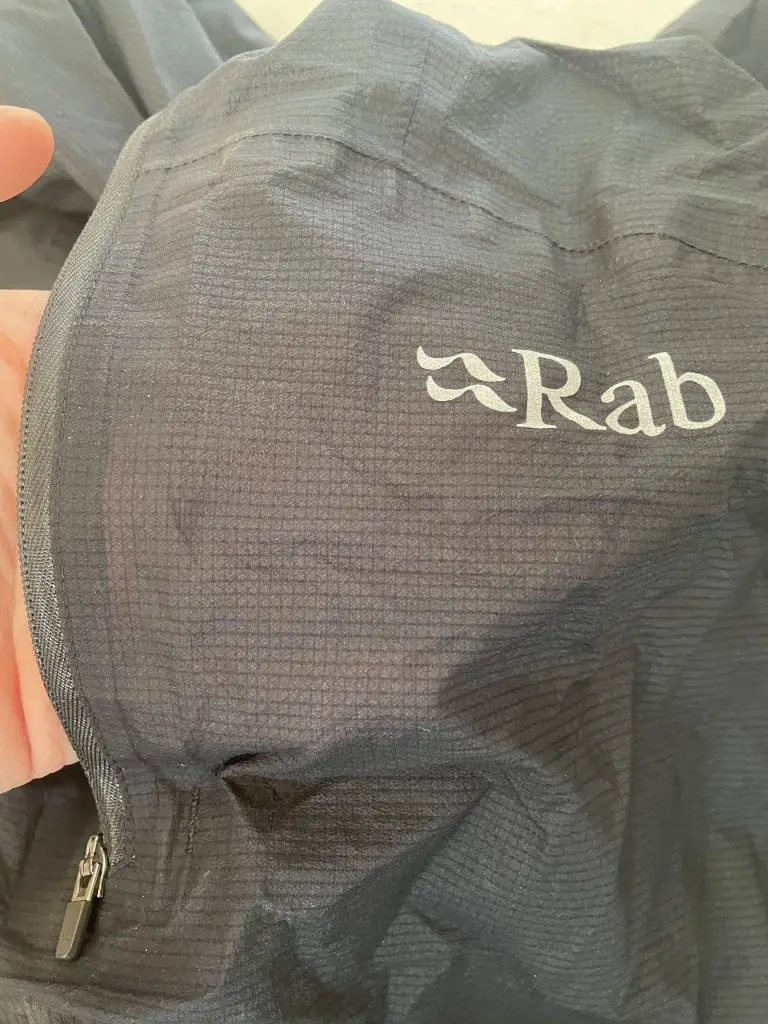
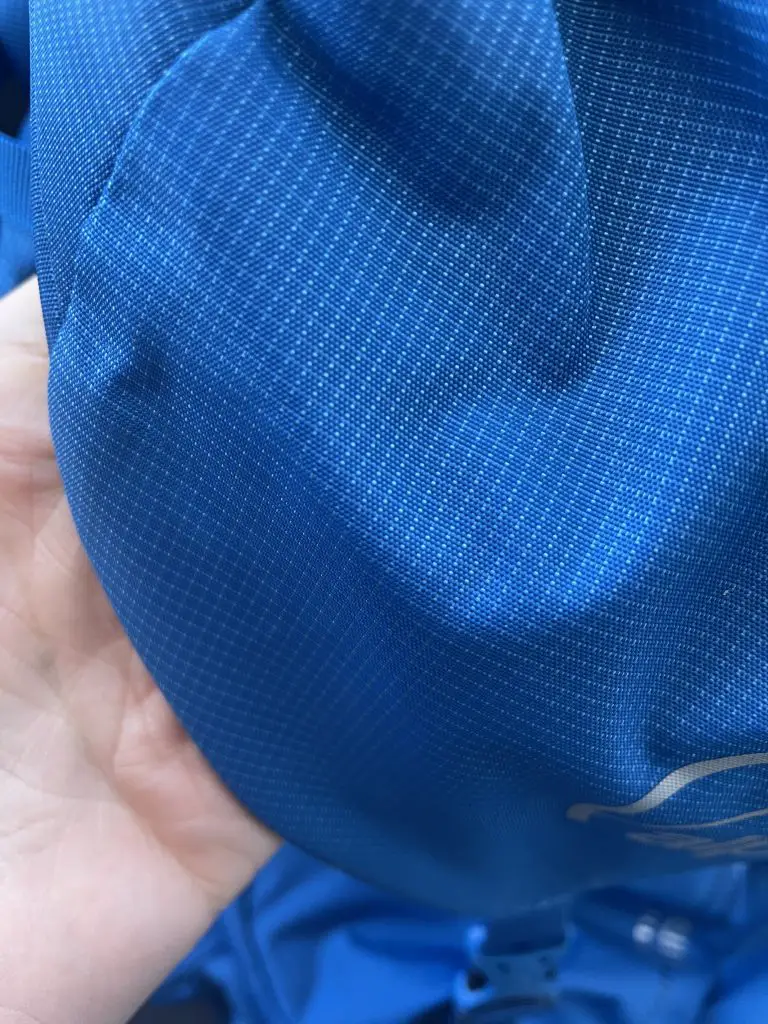
My point – and I apologise for the long diversion – is that saying the fabric is RipStop is mostly useless information. I’d be curious to know more about its thickness and manufacturing process so we could assess if it really is so much tougher than other jackets as to justify the weight, but my subjective opinion is that it probably isn’t notably stronger than, say, the Diamond Fuse fabric on the Rab Generator Alpine.
In addition, of course, it’s clear from looking at the coat that much of the weight is coming from sources other than the fabric – and we’ll come on to that in the next section.
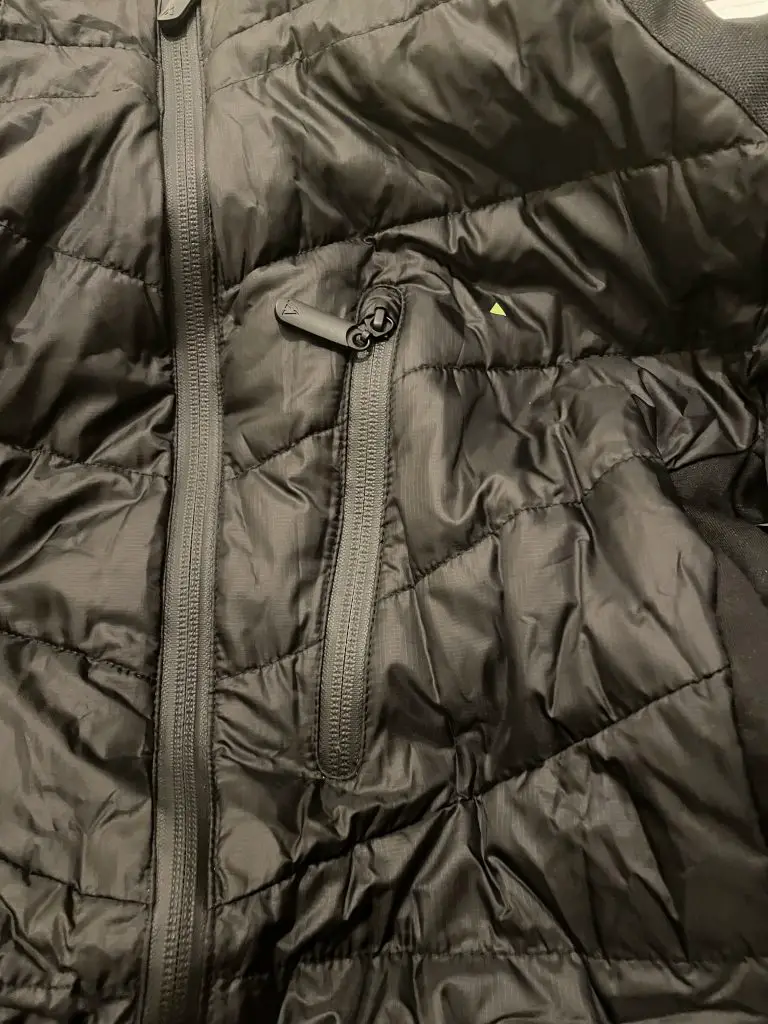
Internal fabrics
Internally, the materials are also quite interesting, as there seems to be a fair bit going on. There’s the synthetic insulation, which is made from recycled plastic bottles – and not down despite the name. Then there’s an interesting shiny reflective material – this was also one of the main selling points of the original jacket although it’s barely mentioned on the page for this one. My understanding is that it’s supposed to boost the warmth of the jacket, which has some logic as space blankets are fairly effective ways to retain body heat.
I do have a few questions about this though – one is whether this is a more efficient way to retain heat than an equivalent weight of insulation? That’s a genuine question; it may well be, I don’t know. But if it is, it makes me wonder why it’s not more standard. The second question is how breathable this is? I doubt space blankets are breathable at all, although the material used in the Apricoat is certainly not just a space blanket, and has a woven texture that makes me think it could well be breathable.
It’s tricky to know how to feel about this. I can’t help thinking that, if this was really a good idea, why wouldn’t other hiking brands be doing it, given they spend a fortune on R&D and are constantly innovating new technologies? On the other hand, it seems a little unfair to simply assume a technology doesn’t work just because no one else is doing it. I think in the end I have to come back to simple experience as a wearer which is that this is an extremely heavy jacket which is only slightly warmer than one that weighs half as much, so the fabric can’t be working all that well.
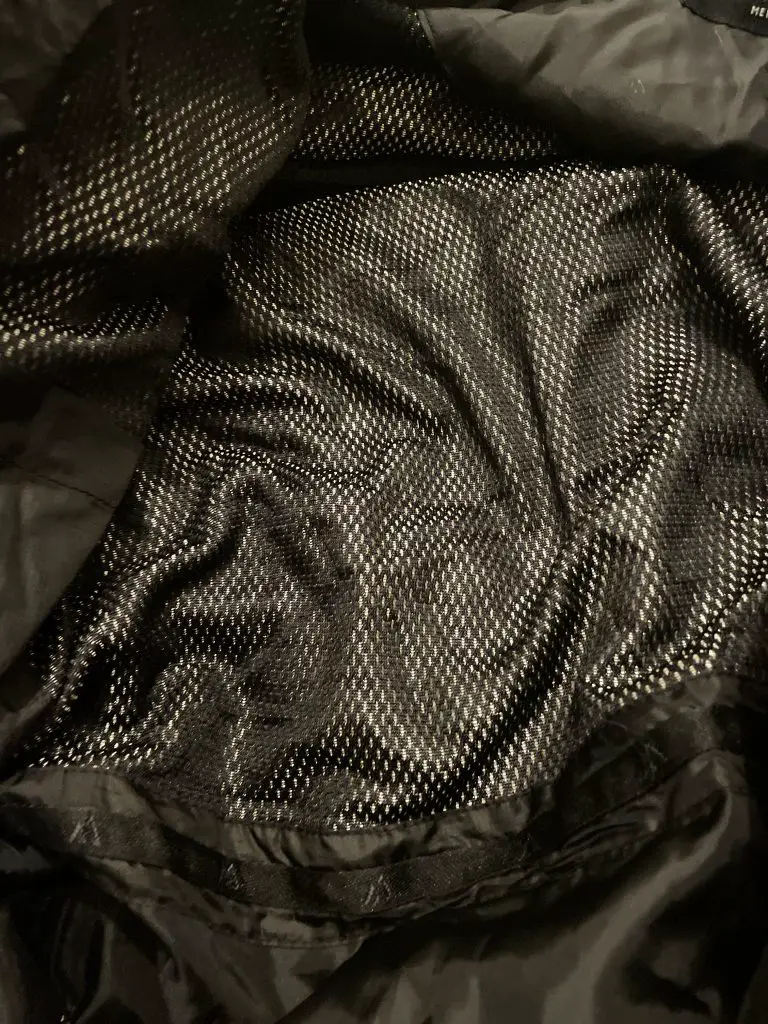
Finally, in front of the shiny fabric there’s a layer of mesh. I’m not totally sure what the purpose of this, it may be that the shiny fabric wouldn’t be very comfortable on its own, but again here’s another area where weight is being added with seemingly little effect.
Features
The Apricoat jacket has a lot more ‘features’ than many jackets I review, so I’ll go through these in a roughly logical order starting from the top!
There is a hood, with toggles to pull it tight. I personally found it a bit of a ‘nothing’ hood – neither close-fitting and stretchy to grip your head and fit under a helmet, like on the Cirrus Flex, but also lacking the rigidity and shape to stay nicely on your head in windy conditions, and especially over a helmet, like the Generator Alpine. It is, however, perfectly warm and cosy and would be nice to pull over your head while standing in a cold train station or sitting around a fire while camping.
Detachable hood
A slightly unusual feature is that the hood can zip off the jacket. I’m a bit torn about this feature – on the one hand, there are benefits to being able to remove a hood: it makes the jacket a little lighter and smaller, and it avoids that irritating bunching around the back of your neck if, for example, you are wearing a raincoat over your insulated layer and want to have the raincoat hood up but not the insulated hood.
However, the zip also adds a bunch of weight, is an extra point of failure, as well as an area of weakness in any insulating or water-resistant properties of the coat. Overall whether this trade-off is worth it for you is a personal choice. For me, it probably isn’t. I do have coats without hoods, precisely to avoid the scenario of having three or four hoods all flapping around my neck when wearing several layers – but I don’t feel the need to add or remove the hood on the go, and I wouldn’t be happy with the added weight and other disadvantages. That’s a personal judgement, though.
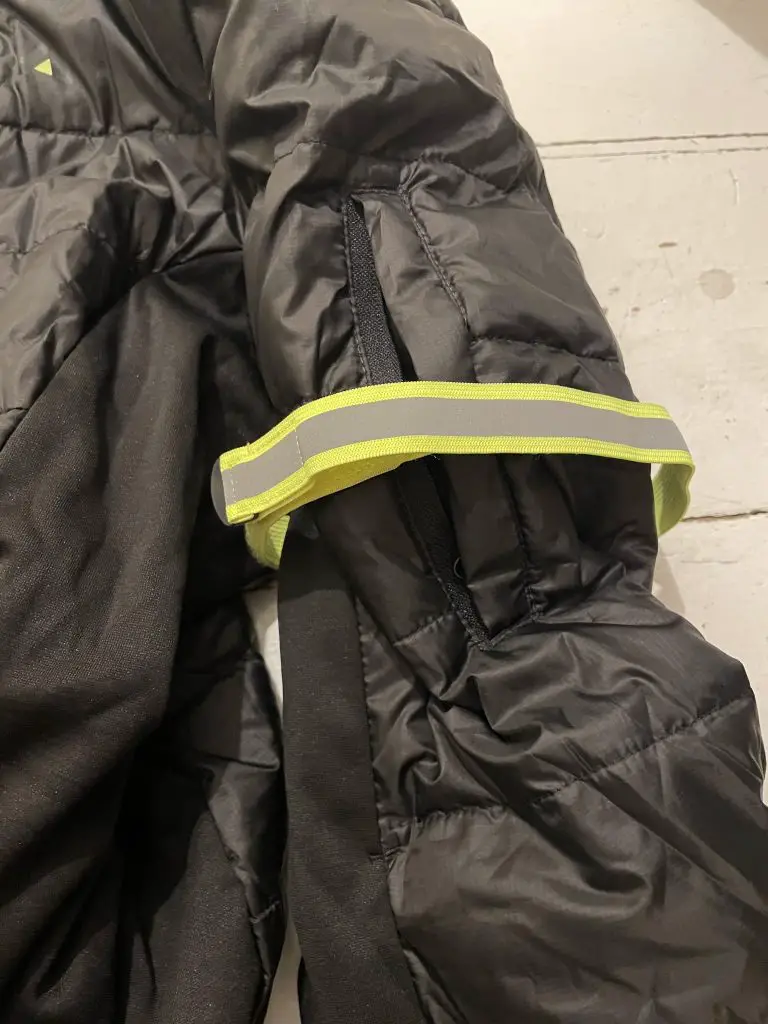
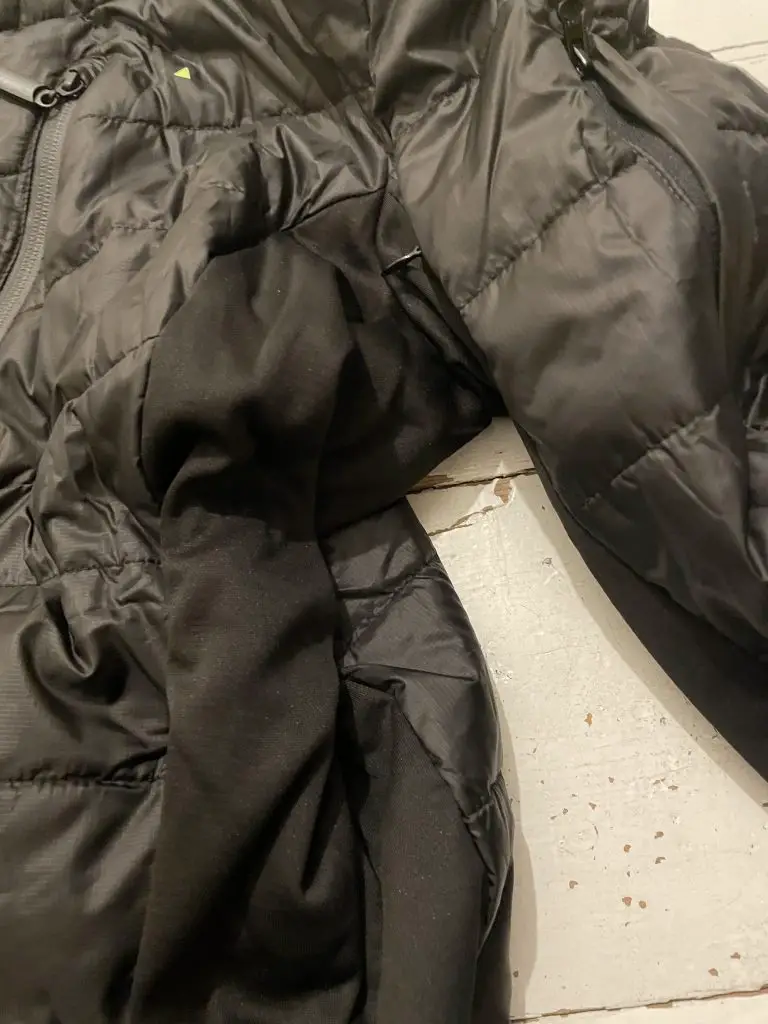
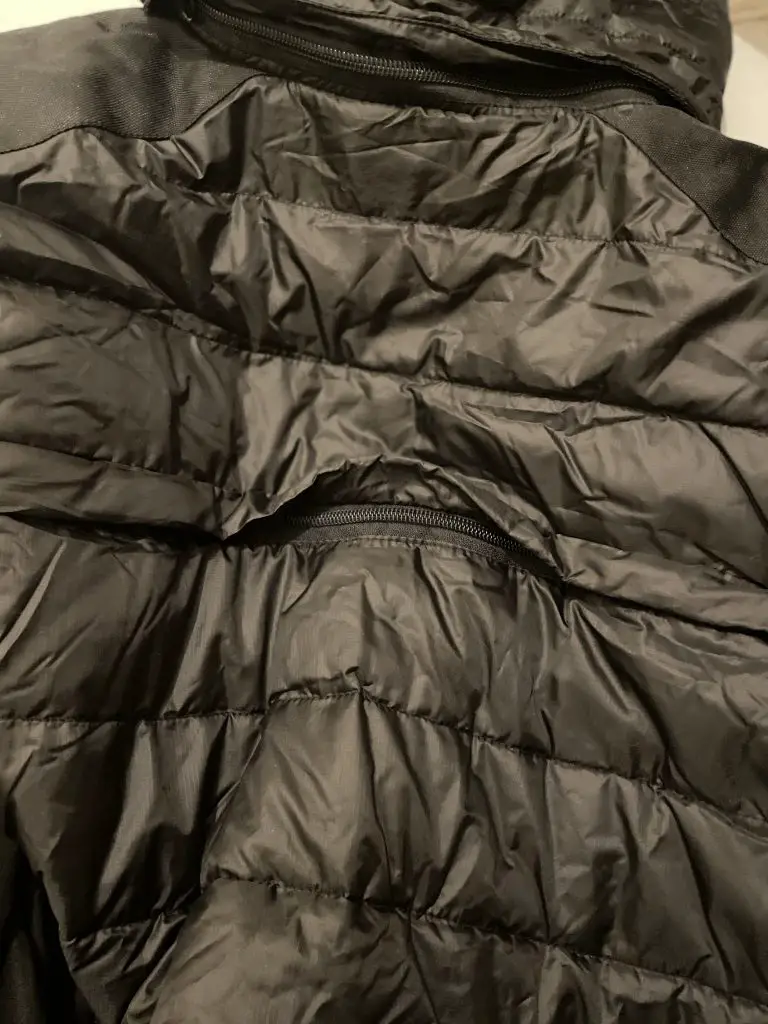
Vent zips
Another unusual feature are three zippered vents, one under each arm and a long one along the back. These are really quite interesting; most decent rain shells have pit zips under the arms, but I’ve never seen one on the back before, and I’ve also not generally seen them on insulated layers.
On the one hand, there are benefits to being able to rapidly vent if, for example, you’re going up a steep incline – and I like the idea of the big vent at the back. I do often end up unzipping the front of a fleece or insulated jacket to cool off a bit, so there’s no reason not to extend that idea to underarms or along the back.
However, I do think there’s a reason we don’t generally see these on insulated layers, which is that (unlike with a rain shell) generally speaking if you’re so warm in an insulated layer that you’re undoing zips under the arms and on the back the best bet is to take it off. That’s the whole point of layering systems, and adding a lot of weight (yet again) to a jacket simply to avoid you having to take it off feels a little pointless to me. In addition to that, 90% of the time that I’m out hiking I’m carrying some kind of backback, even if it’s just a little daysack, which surely would render the back zip fairly worthless?
I do wonder if features like this are more useful when skiing, when you may not have a backpack, and where there are more abrupt transitions between high-energy activities where you’re generating a lot of heat, and sitting stationery for a period and cooling off. I don’t ski a lot so I can’t be sure on that one, but feel free to comment if you’re a keen skier and see a use for these features.
Breathability panels
Like the Rab Cirrus Flex or Arc’teryx Atom Lt and similar jackets, the Apricoat EcoDown Jacket has panels down the sides and under the arms where it has simple fleece instead of insulation. This is a useful feature that increases breathability and comfort in jackets you’ll wear while active, although in this case rather than the simple single layer of fleece on the jackets mentioned above, there are at least two and possibly three layers of material even in this area. Although this doesn’t necessarily undo the purpose of the panels, it does feel like a slightly odd choice.
Pockets
One of the defining characteristics of both the original Apricoat jacket (review here), and the EcoDown jacket is having a lot of pockets. The EcoDown has 11, which comprise:
- 1 and 2: Standard hip pockets. Pretty useful, located lower down where they’re nice and easy to put your hands in, although less good for use with a harness.
- 3: A chest pocket. Also pretty standard, and good for sunglasses, a phone, or other small items that a useful to keep outside the jacket.
- 4: A pocket on the upper left arm. Not hugely useful in my opinion, although it does contain a little reflective yellow band that can be stretched around the arm. I actually quite like this detail as it would be genuinely useful if walking along a dark road at night, although I don’t know if the added weight of the pocket really justifies the rare times I’d use it.
- 5 and 6: Forearm pockets on both sleeves. Honestly, I’m struggling to see the use of these except for a ski pass, or maybe a city-specific public transport pass if I’m in a location that has one. Not worth the weight.
- 7: A small, zippered pocket inside the left chest. Marked up for keys, and this would certainly be one use. Quite a useful pocket for items to be kept secure and out of the way while hiking – car keys definitely being one. That said, I’d have preferred a single, larger zippered pocket instead of this and no 8.
- 8: A small, vertical pocket inside the left chest, marked for a passport and just big enough for one. Although there are scenarios where you might want to keep a passport secure here, I don’t see why you wouldn’t just have a single large inside-chest zippered pocket to put things like keys, passport or even phone in.
- 9: A large pocket around the waistline, with a velcro divider separating it into two compartments. Marked up for torch (flashlight), multitool and battery. Obviously you could put anything in here – personally I still really don’t buy into the idea that I want to keep heavy items like flashlights and multitools in my jacket; it makes the jacket uncomfortable, and it also makes managing your gear difficult if you do end up taking the coat off. Most things are better in a rucksack, and items you really want in your person are usually better in trousers or even on your belt.
- 10: A similar large pocket on the other side, marked up to contain a tablet. I think this is nonsense for hiking, although I could just about see myself using it for a kindle or something if I was wearing this jacket while travelling, especially trying to travel light on an aeroplane – maybe even trying not to bother with a carry-on bag.
- 11: A small pocket for sunglasses. Perfectly useful, although personally I’d keep my sunglasses in pocket 3 where they’re easier to access.
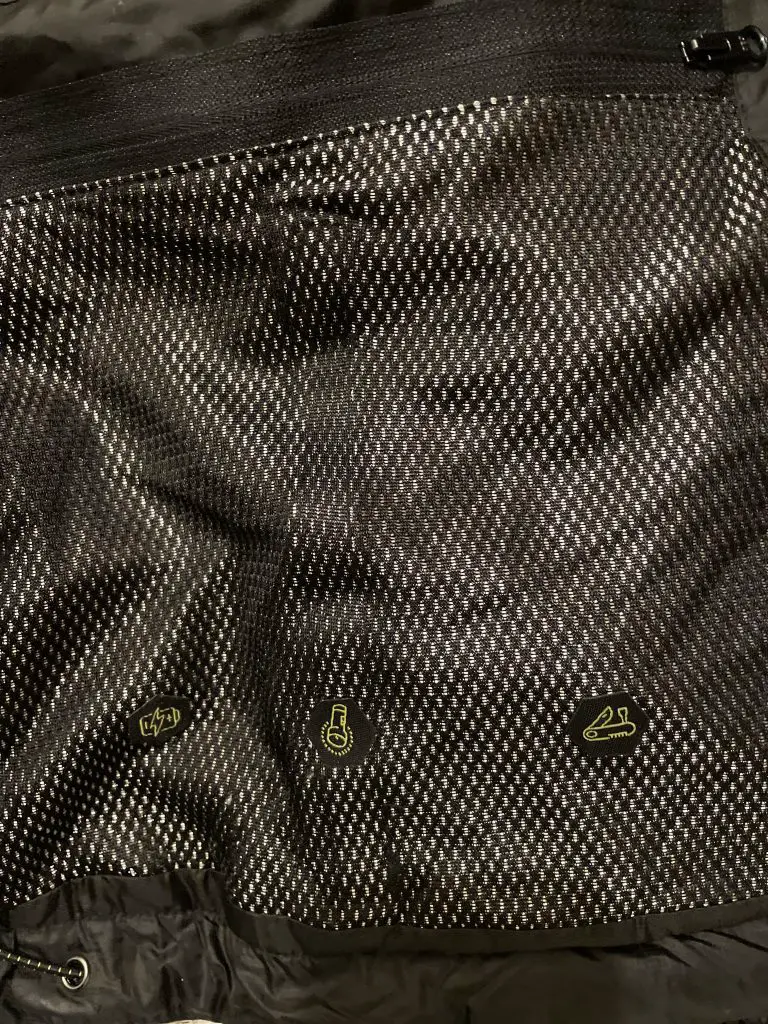

Whether you see all these pockets are useful really comes back to my original question about what is this jacket for. I just don’t think 11 pockets is helpful in a hiking jacket: hikers use insulated jackets as layers that can be taken on and off as needed, and having one that contains all your essential gear is not useful. Heavy and bulky items will make it uncomfortable, and putting lots of things inside your coat just means you need to open the coat and reach inside, which is not great in very wet conditions. Moreover, these all add weight and the utility/weight trade-off is just not there.
That said, if you wanted a jacket to use while travelling, especially on public transport, or walking around a city, then maybe these are a bit more useful. You might want to be able to stow your passport, keys, wallet, ipad or Kindle, and zip your coat up so it’s all safe and secure, even if you fall asleep on the train or on an airport seat! I’m still not convinced it needs that many pockets, or that this is the best possible way to meet that use-case, but it’s not totally unreasonable.
Warmth
Assessing the warmth of a jacket objectively is fairly difficult. My method is to wear it a lot in a variety of temperatures, mainly with just a t-shirt underneath, to avoid confounding factors. I do the same with other jackets, often on the same day so the prevailing weather and temperature is as similar as possible.
They claim the jacket is tested down to -10ºC, which may well be true although I do wonder what the test is. Will the jacket maintain your body temperate in -10ºC while standing still? Or only while moving? Or is it that it will maintain your body temperature enough to avoid hypothermia? And for how long? Unless we know the criteria for the test, it’s not really helpful information unfortunately.
My subjective view – and this will of course vary hugely based on your body shape, perception of cold, and other factors – is that there is no way this jacket would be comfortable as my main insulation when standing still in -10ºC. I tested in temperatures around freezing, and it was just about comfortable while walking briskly, but if I stood still I started to get cold. At much under freezing I’d have been shivering uncomfortably.
In that respect, I found it similar to the Cirrus Flex, although subjectively the Apricoat seemed a little warmer. Both would be quite usable as an active layer in temperatures around freezing, although the weight of the Apricoat means you always notice you’re wearing it, unlike the Cirrus Flex which you’re barely aware of. Both jackets are much less warm than the Generator Alpine, which really can keep you warm while static in temperatures well below freezing.
Price and value for money
The RRP for the Apricoat EcoDown is £172. It’s currently discounted to £120, but for fair comparison I think it’s reasonable to look at the RRPs of products. The Rab Cirrus Alpine or Cirrus Flex jackets are decent comparisons with this one, I think, as they’re all synthetically insulated jackets and the Cirrus Flex has similar breathable panels although the Cirrus Alpine is probably a little closer in terms of warmth. The Cirrus Flex hoody retails for £130 and the Cirrus Alpine hoody for £165. In my opinion, depending on what you’re after, both of these are superior products. They’re vastly lighter, the Cirrus Alpine is certainly warmer and the Cirrus Flex is not far off, they’re better made, and both are cheaper – the Cirrus Flex by a substantial margin.
The Arc’Teryx Atom Lt is another superb breathable, synthetically insulated jacket that would compete well with the Apricoat EcoDown. It retails for £220, which is a jump up in price… but only an extra £50 for a premium brand like Arc’Teryx.
Going the other way, if price is really the issue, you could shop at Decathlon and buy yourself a Regatta thermal padded jacket made from recycled materials, for £65.99 and I think you’d have an equally good product. All you’d be lacking is the myriad pockets, in which case I’d suggest spending the spare £100 or so on a decent rucksack or waistpack.
I don’t mean this to sound facetious – no matter what you buy there’s always a cheaper option, and sometimes price isn’t the only factor. What I’m trying to illustrate is that Apricoat is in a price bracket that places it amongst solid mountaineering brands with years of experience, like Rab, and not far off a top-end premium brand like Arc’Teryx, but I’m not sure it’s done anything to prove it belongs there and I think that no matter what you’re after, you could spend you £170 better.
Even if you look at it as a £120 jacket based on the discount, I think you can do better. For example, you can actually pick up a Rab Cirrus Flex for just £78 now on sale at Trekkit. That really is a bargain.
Final thoughts
Obviously I don’t love the jacket. I don’t think it is suitable as a hiking jacket, unfortunately; the weight is prohibitive for that. It might be an ok skiing jacket, I’d love to hear from people who’ve used it as such. I think it could be useful in the very specific circumstance of someone travelling, especially with a lot of use of public transport, who wants to keep a bunch of items safe and close to their person. It’s not for me, I think, but I can see its utility in that scenario and in some ways I think they’d do better to lean on that and avoid some of their confusing messaging at the moment.
Buy this if
- Being able to carry a lot of items on your person is more important to you than weight.
- You particularly like the style of it, or especially value any of the features such as the zip-off hood or venting back.
- You think it might be useful for skiing.
Don’t buy this if
- You need an insulated jacket for hiking.
- You want a lightweight jacket.
- You’ll be carrying a backpack.

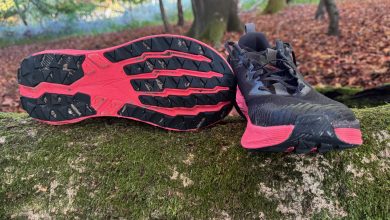
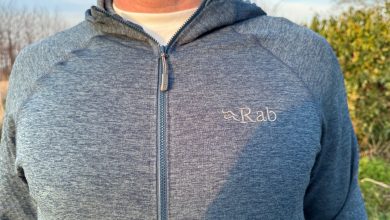
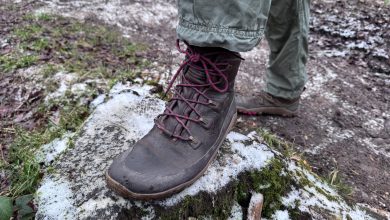
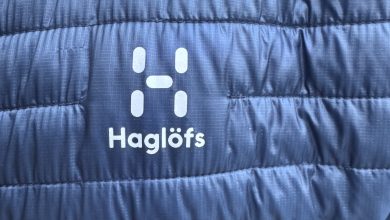
One Comment